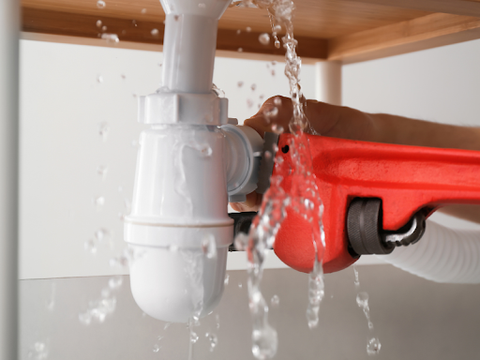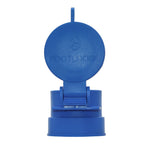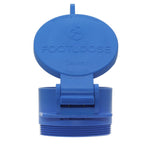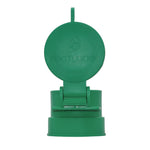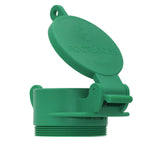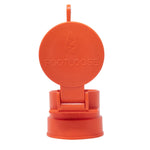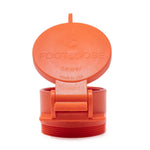You have no items in your shopping cart.
You may not pay much mind to your plumbing, but if it’s not working properly, it compromises not only the comfort but also the safety and health of your home. That’s why it’s important to have a working knowledge of your plumbing system. Most importantly, you need to know what might go wrong and what to do if those problems arise.
To help you keep your residential plumbing up and running, we’ve created this guide to the five top plumbing emergencies and what you should do if they occur.
Top Residential Plumbing Emergencies and What to Do About Them
Your plumbing system is an intricate complex of equipment, pipes, valves, and so on, so there’s a lot that can go wrong. Of course, some issues come up more often than others. These are the top five residential plumbing emergencies you might encounter.
Burst Pipe
Burst pipes are common problems in winter. When temperatures outside get well below freezing, the water inside your pipes can freeze. That freezing water expands until the ice puts so much outward pressure on the pipe that it bursts open.
This is particularly common when a typically warm region gets a sudden cold front. In regions that normally get freezing temperatures, builders generally insulate plumbing pipes well because they know this is a problem.
Sometimes, this only creates a slight crack that allows water to leak somewhat slowly. Other times, it bursts the pipe wide open, creating enough leakage to flood your home. Either way, this is a serious issue because it will inevitably cause some degree of water damage. If you don’t fix the water damage properly, it can lead to mold as well.
You can often prevent a burst pipe by turning your faucets to drip slightly if you’re expecting a cold front. This keeps the water moving in the pipes so it’s less likely to freeze. If you do experience a burst pipe, though, you first want to turn off your water with the main shutoff valve to minimize the damage. Then, call an emergency plumber to fix the pipe.
Toilet Backup

A toilet backup is a messy issue no one wants to deal with, but it happens often. Sometimes, you may simply have a superficial clog inside the toilet or in the pipes near the toilet because you’re trying to flush too much at one time. In other cases, you might have a clog further inside your plumbing pipes that has built up over time.
Either way, you’ll notice that the water level doesn’t go down when you flush the toilet. If you see this, stop flushing so you don’t cause the toilet to overflow.
If your toilet backs up, start by using a plunger, which can often solve the problem if it’s a superficial clog. If that doesn’t work, contact a plumber, as they likely need to snake the toilet to clear out a clog that is deep in the pipes.
It’s also a good idea to minimize using the plumbing throughout your home until a plumber can find the issue. Otherwise, you risk a further backup because the clog may be at a point in the pipes that it affects multiple toilets and parts of the home.
Running Toilet
When you flush a toilet, you hear the water running for a minute or so as it refills the toilet bowl, but then the running sound stops. But what if the running doesn’t stop?
This isn’t likely to cause damage to your home (unless the toilet happens to be clogged at the same time), but it will use up a lot of water if you don’t handle it promptly.
When a toilet won’t stop running, it’s generally because the flapper valve in the tank isn’t closing properly. Open the tank and jiggle the arm attached to the flapper valve to see if it closes. If you see the water level in the tank rising, you’ll know that it worked.
If this happens often or if the valve still isn’t closing, it could mean that the flapper valve needs to be replaced. Contact a plumber to replace it. In the meantime, if the toilet won’t stop running, turn off the valve located behind the toilet to stop the flow of water and avoid using the toilet until it’s fixed.
Clogged Drain
We’ve all had times when a sink or shower drain isn't draining water as quickly as it should. This generally happens because a clog has built up over time within the drain’s pipes. It doesn’t seem like an emergency until the clog worsens and eventually stops the drain from working at all, making the shower or sink unusable.
As with a clogged toilet, the drain clog could be near the drain, or it could be deeper in your plumbing system. If it’s a superficial clog, you can try to remove it using an inexpensive clog remover tool. You can find this tool at any hardware store; it looks like a long strip of plastic with thorn-like extensions along the sides. You slide the tool into the drain and then pull it out, allowing the thorns to grab the clogging materials on the way out. If this doesn’t work, call a plumber to snake the drain.
Note that it’s best to avoid using chemical drain cleaners, especially if you have a septic tank. These chemicals can disrupt the balance of desirable bacteria in the septic tank that help break down waste material.
Loss of Hot Water

The problem with a loss of hot water is that you don’t know it’s happening until you need that hot water. There’s generally only one possible culprit: the hot water heater.
Unlike many other plumbing emergencies, a failing hot water heater doesn’t have a DIY option. These appliances are complex, so unless you have specialized knowledge, it’s best to call a professional and find somewhere else to shower in the meantime. If you try to fix the hot water heater yourself, you could make the breakage worse or void your warranty.
Taking a Proactive Approach to Your Residential Plumbing Care
The best way to handle a plumbing emergency is always to prevent it in the first place when possible. Take proactive measures like:
- Having an inspection by a plumber to look for corroded pipes, poorly insulated pipes, emerging clogs, and other risk factors
- Knowing where your main water shutoff valve is so you can quickly turn it off in an emergency
- Knowing your typical water usage so you know when it’s higher than it should be
To continue expanding your knowledge, read up on more tips for managing your plumbing on our plumbing blog.


